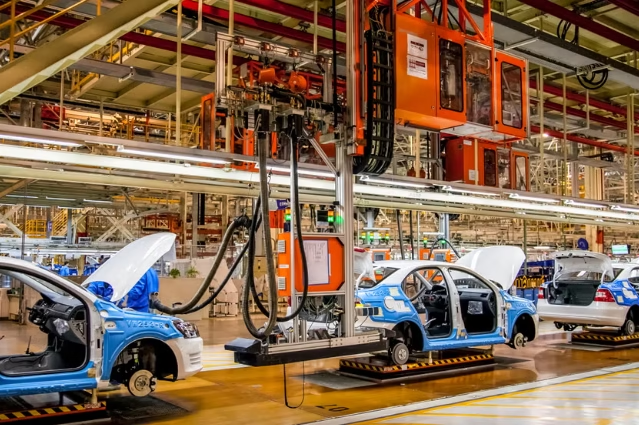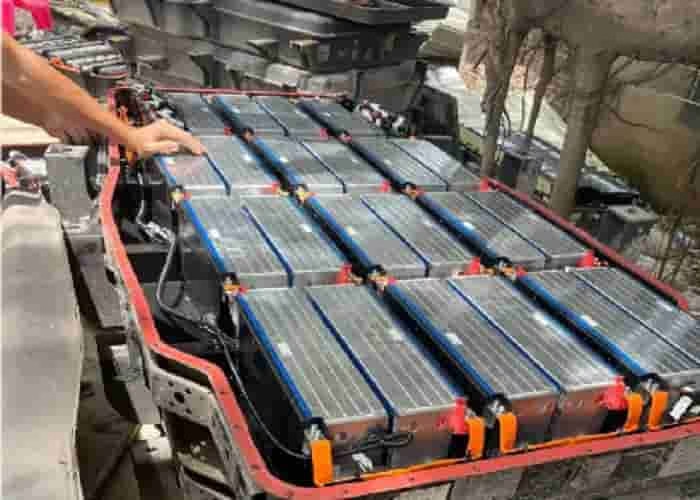As the market penetration rate of new energy vehicles exceeds 40%, the industry ecology is ushering in new opportunities for vigorous development. However, changes in the industry’s competition model, such as the intensified volatility dominated by price strategies, have triggered challenges such as dealer inventory turnover and profit compression. Against this background, the All-China Federation of Industry and Commerce Automobile Dealers Chamber of Commerce put forward five collaborative suggestions, emphasizing the shift from short-term competition to technological innovation and service upgrades, and is committed to building a sustainable ecology for win-win cooperation among automakers, dealers and consumers.
PART 01: Industry status and supply and demand changes
At present, the new energy vehicle industry is in a stage of rapid growth. Driven by technological innovation and consumption upgrades, the market penetration rate has exceeded 40%. This growth trend reflects the increased acceptance of consumers for environmentally friendly travel, but it also exposes deep-seated problems in the industry. In order to seize market share, automakers rely too much on price competition, resulting in an unstable price system in the terminal market, affecting the overall health of the industry. Specifically, the number of test drive cars on the dealer side is unbalanced with the proportion of inventory cars, and the capital recovery cycle is extended, reflecting the fragility of the supply chain. Although consumers benefit from low prices, they may lose confidence due to service degradation in the long run, so the industry urgently needs to transform to a sustainable model. In the new changes in the supply and demand relationship, market competition is not limited to the product level, but also touches the channel-side operating efficiency. Data shows that some companies stimulate short-term sales growth through low-price strategies, but this often comes at the expense of dealers’ interests. For example, 4S stores reflect that inventory turnover has declined, profit margins have been greatly compressed, and some stores are even facing the dilemma of operating capital shortage. After the pressure on the dealer group became prominent, the industry began to reflect: industrial expansion cannot be driven by sales alone, but must take into account the balance of all links. Therefore, optimizing supply and demand matching and strengthening channel support have become the key ways to solve the dilemma.
PART 02: The core focus of dealer challenges
As an important link in the industrial chain, dealers face multiple pressures during the transformation period, among which the extended capital recovery cycle and unbalanced inventory management are the most prominent. Under the price competition model, the production rhythm of car companies far exceeds market demand, resulting in a large number of vehicles piled up on the channel side. This forces dealers to bear high inventory costs and low turnover efficiency, which in turn affects their liquidity. According to industry feedback, the insufficient supply of test drive cars and the excess inventory of cars form a sharp contrast, reflecting the problem of disconnection between production and sales. This not only weakens the dealers’ business vitality, but also indirectly damages the consumer experience, such as delayed after-sales response. In addition, the compression of dealers’ profit margins has triggered a chain reaction in the industry. Excessive promotions by automakers have led to intensified terminal discounts, a sharp drop in sales gross profit, and some stores are even unable to make ends meet. Uneven profit distribution has further intensified the contradiction between automakers and dealers, which will endanger brand loyalty and user satisfaction in the long run. The essence of this dilemma lies in the fact that the industry ignored channel resilience in the early stages and only cared about short-term market share. The Chamber of Commerce pointed out that if the mechanism is not adjusted, the overall market growth may be hindered. Therefore, it is urgent to establish a dynamic business policy to balance the distribution of the interest chain and ensure the healthy development of the industry.
PART 03: Practical suggestions for multi-party collaboration
In the face of challenges, the All-China Federation of Industry and Commerce Automobile Dealers Chamber of Commerce proposed five key measures, the core of which is to optimize the production and sales coordination mechanism and promote the “production based on sales” model. This means that automakers should adjust the production rhythm based on accurate market demand forecasts to reduce the risk of inventory backlogs. At the same time, improve the business policy system and establish a dynamic support mechanism, such as adjusting the subsidy policy according to market changes to ensure that dealers receive reasonable returns. These measures are aimed at breaking the vicious cycle of price competition and shifting to value sharing through cooperative upgrading. In implementation, reference can be made to the experience of leading automakers, such as optimizing inventory management through digital tools.
Another key is to strengthen after-sales service guarantees and unify technical standards to enhance consumer experience. The Chamber of Commerce recommends improving the second-hand car circulation system and the withdrawal compensation mechanism to protect user rights and interests and avoid after-sales “black holes”. For example, formulating industry-wide maintenance and inspection specifications can simplify service processes and improve maintenance efficiency. Cultivating digital capabilities is also crucial, promoting the construction of smart stores and optimizing online service platforms to help dealers shift from traditional sales to comprehensive service providers. These collaborative initiatives can not only alleviate current pressures, but also lay the foundation for the industry to build a sustainable ecosystem.
PART 04: Value-oriented innovation breakthroughs
The core of industrial transformation is to abandon price games and focus on value creation. Consumer demands have shifted from “affordable” to “good use”, which requires companies to invest resources to upgrade technology research and development and user experience. For example, optimizing battery safety performance and charging network layout can enhance product differentiation and competitive advantages. At the same time, intelligent technology upgrades, such as ADAS system development, can improve vehicle reliability and meet users’ expectations for quality life. Through innovative service models, companies can build long-term brand loyalty and avoid low-price homogeneous competition. Under the value orientation, the industry needs to work together to improve quality control and user interaction. Automakers should focus on product life cycle management and optimize user feedback mechanisms through big data analysis. The role of dealers also needs to change, no longer a simple sales intermediary, but a service integrator, providing a one-stop solution. Practice has proved that innovative breakthroughs can stimulate industrial vitality. For example, leading automakers achieve collaborative service optimization with dealers through shared technology platforms. This proves that value-driven not only reduces costs, but also improves service quality and promotes the industry towards high-quality development.
PART 05: Future Path and Win-win
Outlook The healthy and sustainable development of the new energy vehicle industry requires collaborative innovation across the entire industry chain. Automakers should strengthen their core technical capabilities, such as developing efficient power systems, enhancing market competitiveness, and optimizing product life cycle management.
Dealers need to accelerate the pace of transformation, upgrade from traditional sales models to “product + service” integrated dealers, and integrate digital tools to improve efficiency. The role of the government is indispensable, and a fair competition environment should be established through policy guidance to avoid price distortion. Overall, this collaborative ecosystem will bring consumers a more reliable experience, such as charging convenience and after-sales guarantee.
In the future, leading enterprises in the industry have explored successful paths, such as opening maintenance technology platforms, alleviating the financial pressure of dealers, and promoting resource integration. Another example is the co-construction of the supply chain financial system, optimizing the capital flow cycle through cooperation between car companies and upstream and downstream.
These practices have proved that technological innovation combined with mechanism optimization can take into account both cost control and quality improvement. Looking forward to the global market, China’s new energy vehicles are expected to occupy a dominant position under the new paradigm, realize a virtuous cycle of win-win for car companies, dealers, and consumers, and help “China’s smart manufacturing” lead in the global industrial transformation.
















Leave a Reply